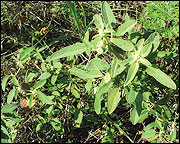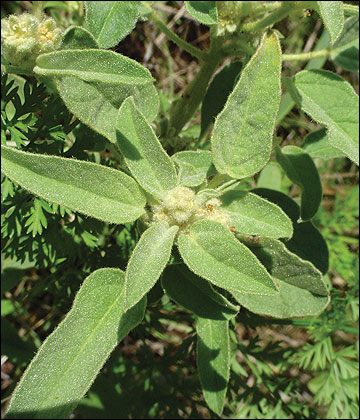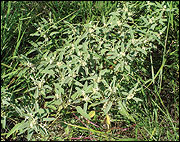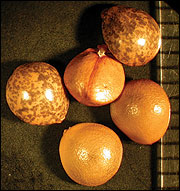Croton
- Croton spp.
- Doveweed, Goatweed, Hogwort
Forb
Croton capitatus (hogwort) is a common midwestern species.
Scott Sudkamp, Missouri Department of Conservation
Croton produces abundant seeds and is a common summer weed in pastures and other disturbed areas. A dense covering of white hairs gives croton flowers a fuzzy white appearance.
Scott Sudkamp, Missouri Department of Conservation
Description
Crotons are annual plants; most with dense white or rust-colored hairs on the leaves and stems. Tiny flowers occur in dense clusters, and each seed capsule contains three seeds (C. capitatus) or one seed (C. monothogynus). Plants are typically less than 18 inches tall. Several species are common in overgrazed pastures and disturbed areas.
Bloom period
July to October
Use by bobwhites
Croton seeds are large and readily consumed when mature. Dense stands or plants mixed with other forbs and grasses provide an open understory and dense canopy, thus affording good brood cover. Crotons readily respond to overgrazing and may be found in abundance in late-summer pasture that has been heavily used.





